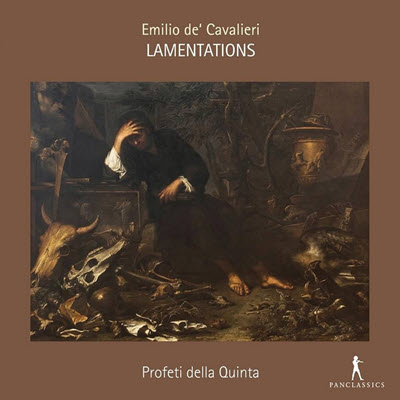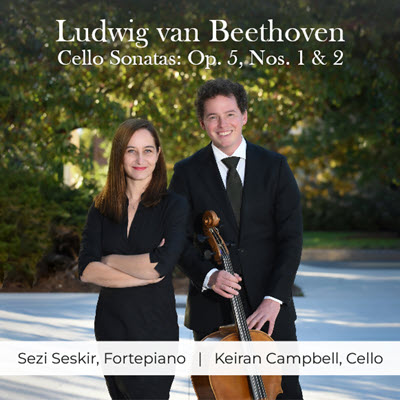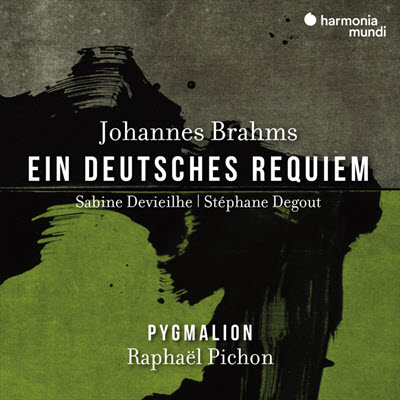by Anne E. Johnson
Published January 29, 2024
Emilio de’ Cavalieri: Lamentations. Profeti della Quinta, directed by Elam Rotem. Pan Classics PC 10451

Emilio de’ Cavalieri (c. 1550-1602) typically shows up in music-history textbooks as one of the inventors of opera, thanks to his proto-opera-cum-oratorio from 1600, Rappresentatione di anima, et di corpo (Representation of the soul and the body). But there is one other large-scale work by Cavalieri still extant, his series of Lamentations, written in the last quarter of the 16th century. On their new recording, the ensemble Profeti della Quinta, under the direction of Elam Rotem, makes a good argument for the importance of this work.

Cavalieri’s Lamentations, written to be sung during Holy Week, consist of three sets of movements. Each includes three Lectiones (Readings) and three Responsi (Responses). Rotem has also added the incomplete opening of a fourth set. As was the custom, Cavalieri even put the title to music. Before the Profeti have finished singing the words “Incipit Lamentatio Hieremie Prophete” (“The Lamentation of the Prophet Jeremiah begins”), the extraordinary quality is obvious, both of the composition itself and of the performance.
Like his younger contemporary, Monteverdi, Cavalieri experimented eagerly with the stile rappresentatione (music designed to represent something extra-musical) and what would soon be known as the seconda pratica (the license to break conventional rules of counterpoint for the sake of expressing the meaning of the words). Add to this Cavalieri’s fascination with subdividing the whole-step into more than two pitches (i.e., smaller than half-steps) and you have the recipe for some densely expressive writing that must be incredibly difficult to sing.
Happily, Rotem and his crew are fully equal to the task. The Profeti della Quinta have five male singers as their core, but they change personnel as projects demand. In this case, they use four members — countertenor Doron Schleifer and tenors Loïc Paulin and Jacob Lawrence, and Rotem as bass. Joining them, for a solid historical reason, is soprano Perrine Devillers. Rotem’s research on this piece revealed that a woman, Vittoria Archilei, sang in the original performances of some of the Lamentations. There are polyphonic movements for five parts as well as (perhaps for the first time ever, according to Rotem) solo and duet sections with continuo.
All five of the singers are nuanced in timbre and intonation, the latter being even more essential than usual for music meant to be interpreted microtonally. Devillers and the Profeti are exquisitely trained in producing these specialized tones, not to mention the rhythmic phrasing needed to give purpose to the slightly sharped and flatted notes. Like listening to a split-key keyboard, the experience of hearing such singing is both disorienting and mesmerizing. (Here’s a demonstration of split-key keyboard music by Cavalieri’s colleague in Rome, Nicola Vicentino, another ardent advocate of “enharmonics,” or the dividing of the octave into more than 12 pitches.)
Rotem explains that a keyboard with a 19-pitch octave is required for some of the Lamentations because of the details of the vocal writing. Rotem plays the organ as part of a continuo section that also includes Orí Harmelin on theorbo and Elizabeth Rumsey on lirone (a bass viol). Like their singing counterparts, the instrumentalists on this recording play with the sensitivity and confidence — and crucial lack of self-consciousness — found in the best HIP renderings. Karel Valter’s elegant sound production contributes to the overall effect.
Rather than being constantly aware of the careful scholarship behind each note, the listener is carried away by the emotional beauty of these text-settings, to the point of believing that this was, in fact, what the music originally sounded like. For the sake of the parishioners who heard the Lamentations during Cavalieri’s lifetime, I do hope so.
Anne E. Johnson is a freelance writer based in New York. Her arts journalism has appeared in the New York Times, Classical Voice North America, Chicago On the Aisle, and PS Audio’s Copper Magazine. She teaches music theory and ear training at the Irish Arts Center in Manhattan. For EMA, she recently wrote about Salamone Rossi’s ‘Songs of Solomon’ at 400




